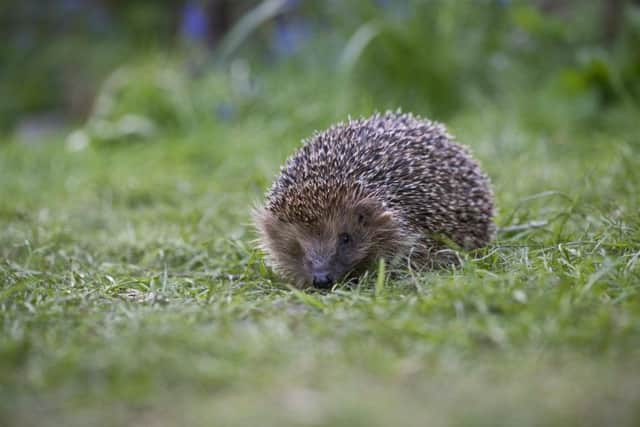Survey finds far fewer hedgehogs seen in gardens


Figures compiled by 500,000 people who took part in the RSPB’s Big Garden Birdwatch survey showed that hedgehogs were only seen regularly in a third of gardens – although 67 per cent did report having seen one of the creatures at least once.
This year’s survey was the first in its 36-year history to include other wildlife alongside birds.
Advertisement
Hide AdAdvertisement
Hide AdIt found that more than half of people in the UK see frogs in their gardens on a monthly basis but only a fraction ever see the endangered red squirrel. More than a quarter of respondents see toads monthly, even though numbers of the amphibians have declined, especially in central and southern England.
The most common animal spotted was the grey squirrel with nearly three-quarters of people seeing them in their gardens at least once a month.
Britain’s native red squirrel is faring less well, with just 3 per cent of people seeing them on a monthly basis. But that figure rises in rural Scotland, where almost one in five people sees them at least monthly.
Two out of five country dwellers spotted badgers but a fifth saw them in suburbs and 15 per cent spotted them in towns.
Nearly half of country residents have seen a roe or muntjac deer in their garden, compared with only 7 per cent of urban dwellers.
The survey enables animal charities to tailor their advice so that people can help their wild visitors find a home, feed and breed successfully.
Last year, 25 wildlife organisations, including the RSPB, released a State of Nature report, revealing 60 per cent of the wildlife species studied have declined in recent decades.
Many garden favourites were shown to be in serious trouble including starlings and hedgehogs, as well as some butterflies and ladybirds.
Advertisement
Hide AdAdvertisement
Hide AdRSPB conservation scientist Daniel Hayhow said: “This massive survey shows how important our gardens are for the amazing variety of wildlife living there. The State of Nature report showed that we need more information across many species groups, so widening the Big Garden Birdwatch’s scope made perfect sense.
“In a few years, we’ll be able to compare how the distribution of garden wildlife may have changed. Hopefully, the fact that more people are helping to give nature a home in their gardens will mean we see improvements rather than declines.”
David Wembridge, of the People’s Trust for Endangered Species, said: “While gardens can be ideal habitats for mammals we know that only a minority are regularly used by hedgehogs – one species we’re particularly concerned about.
“With numbers falling in the countryside, doing more to encourage hedgehogs into the green spaces around our homes could make a big difference.”
The RSPB has launched its latest campaign, Giving Nature a Home, encouraging people to provide a place for wildlife by planting pollen-rich plants to attract bees and butterflies or creating a pond to support a number of different species.